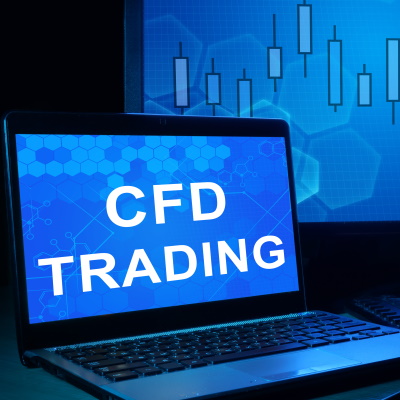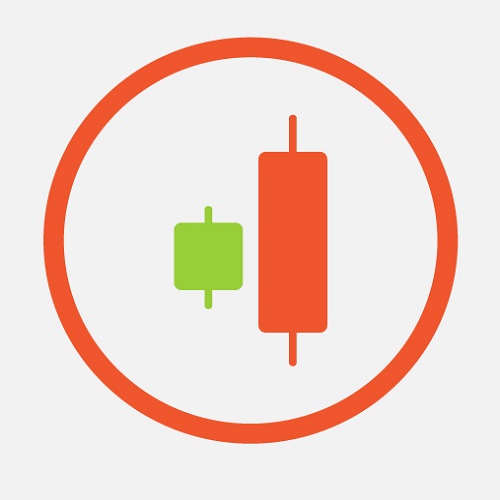How to Trade CFDs - The Essential Guide
CFD trading does not involve the buying and selling of an asset but establishing a contract whereby one party pays the other the difference in an asset's price between the opening and closing of the contract.

CFDs 101
Investors all over the world participate daily in the CFD trading economy. Veterans, as well as novice traders, use Contracts for Difference in their trading strategies to grow their savings, protect their portfolios through hedging or generate the capital they need for business ventures.
Like stock trading, CFD trading can be carried out through a CFD broker, with hundreds of platforms easily accessible online.
Unlike stock trading, however, online CFD trading does not involve the buying and selling of an asset. Instead, a contract is exchanged between the trader and the broker. It contains a prediction about the price movement of a certain asset (a stock, commodity, currency pair etc.) within a specified time period.
Depending on how the price moves, either the broker will pay the trader the difference, or vice versa.

CFDs emerged as a means of providing wider and faster access to the world’s financial markets. The rise of the internet allowed millions of ordinary people to apply their knowledge and acumen to the business of trading, without having to own the underlying assets.
What had once been the exclusive preserve of large organizations and privileged individuals was suddenly available to anyone with a PC and a stable internet connection. Even the issue of capital ceased to be a problem with the emergence of margin trading, allowing traders to multiply the power of their positions using leverage.
Trading CFDs online allows investors to take advantage of bullish (upward) as well as bearish (downward) market movements. If the price of an asset rises or falls according to the trader’s forecast, they will be able to make a profit.
This article will provide you with some tips about how to trade CFDs, as well as information about where trading is permitted and prohibited.
The basics of how to trade CFDs
A CFD broker will usually be able to facilitate CFD trading on all the major currency pairs in the Foreign Exchange (Forex) market, all the world’s major indices (such as the Dow Jones, the S&P 500 and the FTSE 100) and stocks, as well as other markets such as commodities, bonds, cryptocurrencies, and ETFs (Exchange Traded Funds).

However, not every broker can offer CFD trading on all assets at all times. The major currency pairs — the EUR/USD, USD/JPY, GBP/USD, AUD/USD, USD/CHF, NZD/USD and USD/CAD — which represent around 85% of the entire Forex market, are highly liquid, meaning it is always possible to open a position. More obscure (or exotic) pairs are often illiquid, and it will not always be possible to open a position at the desired time.
It is therefore important to check whether a CFD broker you are considering offers market execution or instant execution. Market execution means that you place an order and specify only the volume (the number of shares, for example). The bid/ask price is generated when the order is processed.
Instant execution, on the other hand, allows you to specify both the volume and price, with the order processed instantly. If the price changes at the last moment, the broker can stop the execution and contact you with a requote, which you can either accept or reject.
Another key element of your decision is the nature of your investment strategy or trading plan. This includes variables such as your financial goals and the amount of available time you have to monitor the markets and research specific assets. It also covers your trading style – how long you will generally hold your positions open. This is one of the most important aspects of how to trade CFDs.
It includes the types of CFD analysis you will rely on. Technical analysis is all about chart and price action analysis, based on predicting trends using a wide range of statistical tools. Fundamental analysis, on the other hand, involves researching economic news and company data to make more informed decisions.

Behavioural analysis, meanwhile, is about studying the psychological factors that drive market movements and the actions of specific investors or groups of investors. It is vital to check whether the broker you are considering provides the tools and knowledge resources you will need.
Al these aspects of your trading plan will help you determine the points at which you will enter and exit the markets.
Where is CFD trading allowed and forbidden?
CFDs trading originated in London, which is still one of the world’s main hubs. The European countries that allow CFD trading include France, Ireland, Spain, Germany, the Netherlands, Portugal, Italy, Romania, Switzerland, Norway, and Poland.
Around the world, it is possible to trade CFDs if you are resident in nations including Hong Kong, Singapore, South Africa, Japan, Australia, New Zealand, and Canada.
In a globalised, highly mobile world, CFD traders do not wish to be limited by location. However, it is important to note that trading CFDs is not permitted in many countries.
The United States Securities and Exchange Commission has restricted CFDs trading as part of its existing restrictions on over-the-counter financial instruments. However, investors based in the US can sometimes use overseas CFD service brokers to trade financial instruments that are not based in the United States.
What’s next?
Technological advances have made it easier for private individuals all over the world to trade CFDs. The events of the past couple of decades have proved that institutional investors like banks and hedge funds do not have a monopoly on financial wisdom – far from it, in fact.
If you’re looking for a financial product that can help you benefit from short-term price movements on different assets without owning them, then CFDs could well be for you.
First, start defining your goals and the level of risk you are ready to accept to achieve them. Choose a CFD analysis style and perfect it. Then, begin forming your strategy and write a clear trading plan that outlines how to trade CFDs according to your unique requirements. And manage your positions, as well as how much capital you will allocate.
Once you know your direction of travel, it will then be time to select the online CFD broker that best suits your needs.




